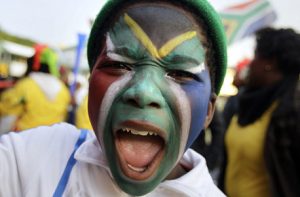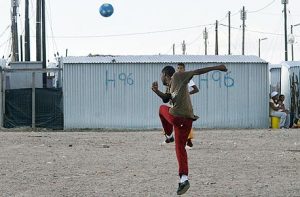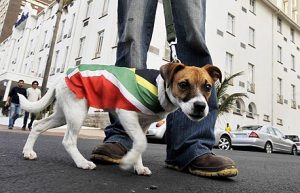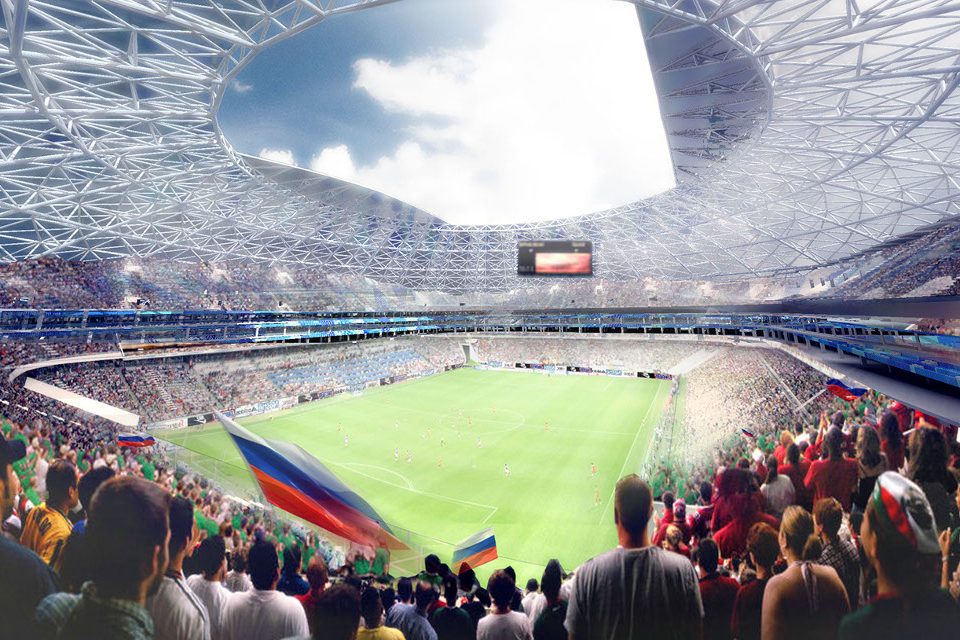- How can we help?
- +90 542 719 6712
- [email protected]
So … how South Africa benefited from the World Cup
So … how South Africa benefited from the World Cup

So … how South Africa benefited from the World Cup
The largest sporting event held on African soil represents a turning point for the host country and perhaps for the continent as a whole. Deloitte is convinced that from a purely economic point of view, the World Cup did only good for South Africa.
Although the local team won the dubious title of the first host team that failed to qualify from the stage of the houses, but it appears that the first host country from the African continent benefited in any case. The 2010 FIFA World Cup actually made a turning point for South Africa.
An instructive lesson
The 2010 World Cup games were different in many respects from the 2006 World Cup in Germany. The benefits of hosting World Cup 2010 games are greater for South Africa – an emerging market with a wide range of opportunities, including improving the country’s global standing – as opposed to the potential in Germany that hosted the previous World Cup. Various countries (especially Brazil, which started preparing for the 2014 World Cup), which seek to raise budgetary support for hosting major events both from internal bodies and from outside international organizations (such as FIFA), should learn a lesson from South Africa’s experience as the first African country to host the observed sports event most.
In addition to attracting cash from the foreign visitors, the event also increased the consumption of local cash more than the local German expenses in the previous World Cup.
On the other hand, the risk of the World Cup in the shadow of the global economic crisis is expressed in the expectation of a very low number of tourists, partly because of the great geographical distance between South Africa and the developed countries. These concerns increased considerably two months before the tournament opened, with about half a million tickets yet to be sold.

National package of incentives
Preparations for the 2010 World Cup took place against the background of the global economic recession, which had its first impact in 2007. Even without hosting the World Cup, South Africa was well prepared to overcome the economic storm with a well-established fiscal policy and a low national debt. However, preparations for the event provided a significant incentive for injecting cash into the local economy, thus making it possible to further isolate the country from the effects of the recession. Moreover, much of this investment has been used for projects that will have tangible value for the country even after the end of the World Cup.
Thus, for example, it can be said that the event served as a catalyst for long-term infrastructure work. A well-planned policy to hire workers to improve roads, build a new airport, expand existing airports and build new stadiums led to the training of skilled personnel who had been unemployed in the past. This should have a long-term positive impact on the growth of the country’s largest human resource by integrating and restoring skilled labor to the labor force.
In addition, the tough schedule of the 2010 FIFA World Cup led to increased cooperation between various government bodies, from the local authorities to the government itself. This experience, which includes comprehensive planning and proper cooperation among government bodies, will be able to assist them in the future as they deal with periods of crisis that require proper preparation and planning.
Infrastructure for the 21st century
South Africa is an interesting combination of a developed and developing country; On the one hand, it has a strong technological and economic base that puts it in line with the world’s developed nations. On the other hand, the lack of sufficient infrastructure prevented it from realizing its full economic potential. The 2010 World Cup games made it possible to accelerate the improvement of the infrastructure it needed.
Until recently, South Africa had a severe shortage of public transportation. The need to move tens of thousands of soccer fans, teams and delegations from one place to another pushed the country to complete the first part of a new and fast train as soon as possible, and to add bus lines at times suitable for opening the World Cup. There is still much work and more infrastructure to be done, but the World Cup precipitated the start of these public projects, and even brought some of them to completion sooner than they would have been if the World Cup had not been held.
The need for housing and hosting a large number of tourists during their games required the country to upgrade the existing hotels and accommodation options. Thus, for example, universities designed a vacation coinciding with World Cup dates, which allowed the upgrading of facilities and student dormitories in order to provide adequate accommodation and accommodation for visitors. The upgrade will, of course, allow students to enjoy the facilities long after the World Cup ends.
Also, before the 2010 FIFA World Cup, South African airports had difficulty serving and dealing with the volume of modern air traffic. Due to the schedule of the event, the city of Durban was able to complete the construction of a new airport named after King Shaka (leader of the Zulu tribe) at a cost of about one billion dollars. The new international airport, with 3.7 km of runways, can handle the new generation Jumbo aircraft such as the Airbus A380, which is designed to serve approximately 7.5 million passengers annually, and the Johannesburg airport OR Tambo has also been upgraded to the World Cup A new terminal connected to the Sandton area of the city by a train moving at a speed of 160 mph. This achievement is reinforced by the fact that for five decades has not built an airport in the country.

Great importance to the greens
The 2010 FIFA World Cup re-raised the challenge of creating energy without an overly negative environmental impact. New stadiums built for the event include environmentally friendly features, such as natural ventilation and a rainwater collection system.
In addition, the host cities of Johannesburg, Cape Town and Durban have pledged to plant trees on a large scale to absorb the excess carbon dioxide produced. The city of Durban, inspired by the World Cup, used the energy produced in hydropower systems with maximum utilization of biomass. However, the 2010 FIFA World Cup footprint is expected to triple that of the 2006 FIFA World Cup and weigh twice as much as the Beijing Olympics.
The big carbon emissions come mainly from the heavy air traffic caused by the transport of football teams and fans from all over the world to participate in the games, along with the land traffic between the host cities deployed in different parts of the country.
South Africa’s reliance on coal (90% of its energy) is also a reason for large carbon emissions.
With its largest coal reserves (the fifth largest producer in the world), South Africa is expected to remain dependent on coal and even double production capacity to meet rising economic demands.
This combination, along with a renewed sense of environmental responsibility in encouraging the spirit of the World Cup, is an opportunity for South Africa to position itself as a leader in clean coal technology. Technologies such as burning of minced coal, combustion in a floating platform, gasification and hybrid methods are just some of the technologies that are under development in South Africa and may reduce the harmful environmental impact of the country’s main energy resource.
Security and security issues
The vast stream of people that swept the country, with the largest television audience in the world (numbering hundreds of millions of viewers), posed unique security challenges to South Africa – challenges that have not been answered so far. Thus, the South African Minister of Police consulted more than 30 countries whose citizens were to be in South Africa during the World Cup. The result was unprecedented cooperation and extensive international involvement in security in South Africa.
Following the desire to balance a welcoming atmosphere with strict security standards, the minister of police in the country referred 40,000 policemen, who make up about 25 percent of his total manpower, for police policing. All this in order to prevent acts of hooliganism, robbery and terrorism. The effort also involves private security companies, which, along with specially trained police officers, have strengthened the regular police units. It should be noted that some of the employees died because they did not receive the salary promised to them.
Joint Operation Centers were established at each of the World Cup gaming sites. Each center coordinates the police forces, medical teams and firefighters so that it will be possible to respond quickly and efficiently to any crisis or problem that may arise. All of these helped thousands of volunteers who directed the crowd to and from the stadiums. In addition, the Ministry of Justice has also made a special effort to establish 56 courts in central locations throughout the country, in order to discuss and finalize all cases relating to the World Cup even before the end of the Games.
All these activities required a renewed spirit of cooperation between bodies, offices and departments both nationally and locally. Streamlining communication channels, defining responsibilities, a clear chain of command and upgrading communications equipment will continue to serve the various bodies even after the World Cup.
It should also be noted that as the economy of South Africa continues to grow at a faster pace than that of the surrounding countries, illegal immigration is a growing concern. Security and improvements at the South African border crossings would have taken a long time, and the World Cup accelerated their handling. Cooperation between the national security forces, the police and the intelligence services is also a significant benefit (“the legacy of the end of an event”), which will be preserved and utilized even after the 2010 FIFA World Cup.

A united nation
Heritage The end of the biggest event of the 2010 FIFA World Cup is difficult to quantify. This is a sense of national pride, which was intensified as a result of the event and greatly influenced the unification of the state. Even after the end of the Apartheid regime in 1994, the country was still divided in many ways between the 40 million black residents and the 6 million white people. The sport was also close to the past, and the clearest expression of this was when President Nelson Mandela appeared in public wearing a rugby shirt (traditionally a supporter of whites) to demonstrate his solidarity with the white citizens of South Africa. The 2010 FIFA World Cup further united millions of soccer fans from different ethnic groups under their common national flag and led them to encourage their team and country together.
On the eve of the opening of the event, South Africa understood the many advantages that countries hosting large international sporting events wish for. The event provided a national boost to improving infrastructure and raising employment during a difficult period for the global economy as a whole, and provided a point of consolidation for the country, which is still one of the world’s emerging markets.
Many of these benefits will remain after the World Cup closing ceremony. It is reasonable to assume that some of the benefits will be reduced after the event, for example, there will be a decline in employment in certain areas. However, it is also possible that major construction projects will continue, including building and improving the railway system and improving the road system, and training and nurturing the workforce as part of the preparation for the 2010 World Cup games will continue to contribute to the country.
A study by TNS Research shows that South Africa’s consumer confidence index has been on a high level for the past two years. Similarly, in Germany there was also an increase in the consumer confidence index around the 2006 World Cup, but its impact on an economy that is trying to grow during a more global recession. Increased cooperation among various agencies within the administration, positioning South Africa as an attractive tourist destination, and a renewed sense of national pride will help the country remain a strong player in the forefront of the world stage even after the global limelight disappears.



